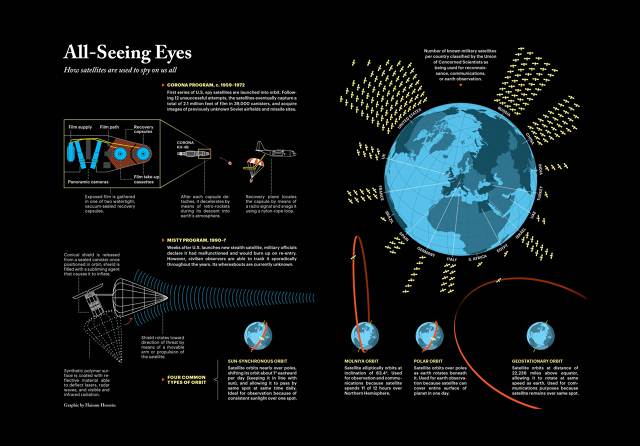Humanity has filled space with a staggering number of satellites in the 60-odd years since Sputnik, with the United States Space Surveillance Network currently tracking more than 8,000 man-made orbiting objects. But how many of those satellites are spy satellites? No one's entirely sure, but this infographic from Lapham's Quarterly is a great primer on what we do know about the all-seeing eyes above us.

Published as part of Lapham's Quarterly's newest 'Spies' issue, the 'All-Seeing Eyes' infographic shows an overview of the known government spy satellites still up in the sky. Not so surprisingly, the United States has the most spy satellites (83), while Russia has 50 and China has 36. But none of this information is up to date: for example, most satellites launched since the Corona Program, which ended in 1972, are still classified information in America. The latest confirmed information we have on America's spy satellite program is from 1990, when the United States claimed that its new stealth satellite, Misty, "burned up on re-entry," something which has since been disproven.
In addition to information about what satellites are out there, the chart is a good primer on how spy satellites work. Orbits, for example. When you think of satellites, you probably think of them in sun-synchronous orbits, which roughly cover a straight line around the Earth, passing the same places every day. But there are other kind of orbits which are much more useful for spy satellites, like the Molniya Orbit—an elliptic orbit that spy satellites can take to keep the Northern Hemisphere in view 22 hours a day. That's important, because most of the key geo-political players are all operating in that theater.
It's fascinating stuff. If this chart gets your whistle wet to learn more about international intrigue, check out Lapham's Quarterly's current 'Spies' issue here.